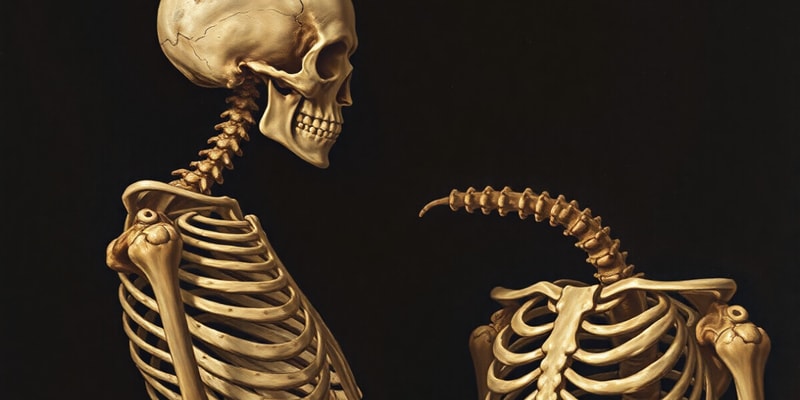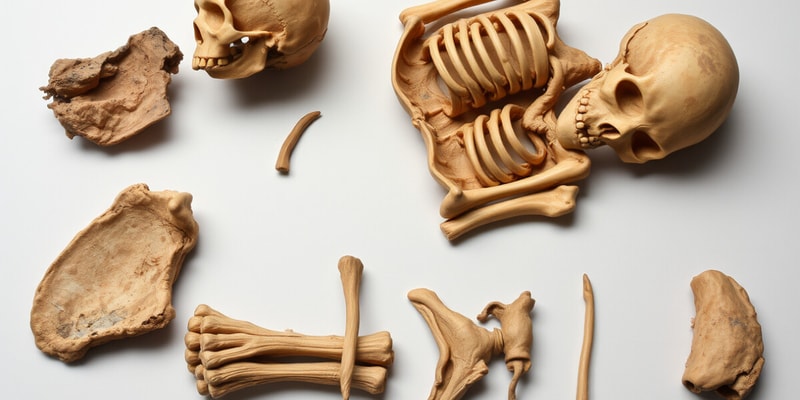Podcast
Questions and Answers
Which aspect is NOT typically analyzed by forensic anthropologists when examining skeletal remains?
What type of trauma might a forensic anthropologist examine in skeletal remains?
Which of the following is LEAST likely to provide information about the individual’s lifestyle?
Forensic anthropologists may determine the race of an individual based on:
Signup and view all the answers
What does the analysis of stature tell forensic anthropologists about the individual?
Signup and view all the answers
Study Notes
Forensic Anthropologist Role
- Forensic anthropologists are trained to utilize skeletal remains to answer questions about an individual's identity
- They work with law enforcement in cases of unidentified human remains
- Forensic anthropologists provide information on the individual's biological profile, which includes sex, age, race, stature, and trauma
Biological Profile
- Sex - Sex can be determined through examination of the pelvis, skull, and long bones.
- Age - Age can be estimated by looking at tooth eruption, epiphyseal fusion, and bone degeneration.
- Race - Race can be difficult to determine and can be influenced by geographic location and ancestry.
- Stature - Height can be estimated from the length of long bones, such as the femur and humerus, using regression equations.
- Pathologies - This includes diseases and abnormalities of the skeleton.
- Trauma - Injury to the skeleton can be used to determine time of death and manner of death.
- Individual Traits - Unique traits can be used to identify an individual. These could include scars, healed fractures, or dental work.
Studying That Suits You
Use AI to generate personalized quizzes and flashcards to suit your learning preferences.
Description
Explore the essential role of forensic anthropologists in identifying individuals from skeletal remains. This quiz covers how they determine biological profiles, including sex, age, race, stature, and trauma, and their collaboration with law enforcement in forensic investigations.





